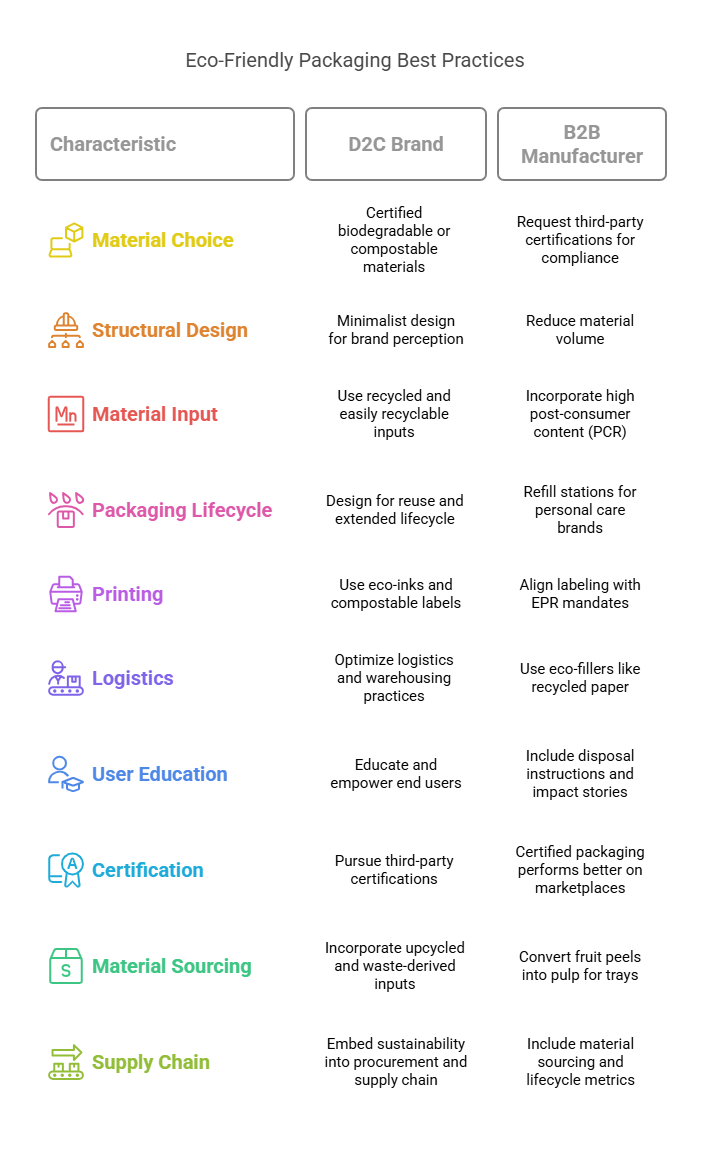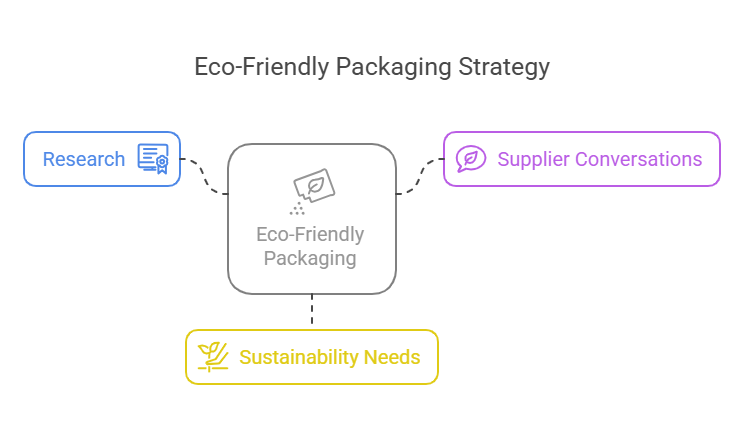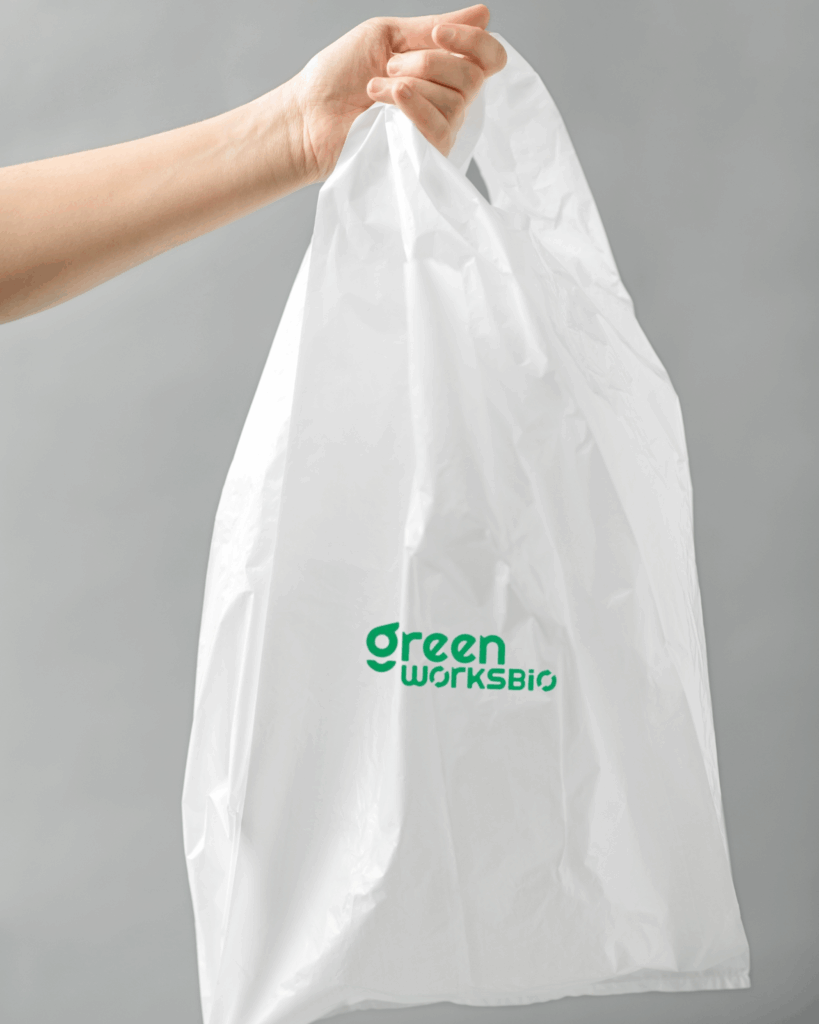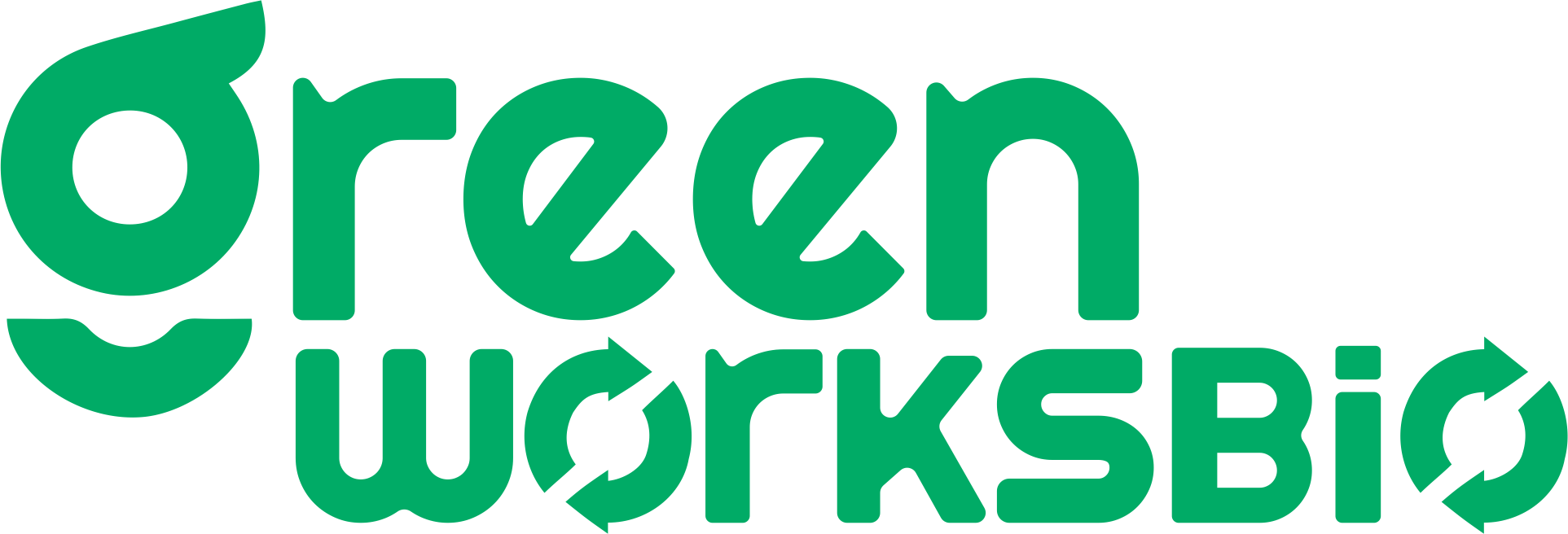Packaging is the first thing your customer touches—and the last thing the planet deals with.
If you’re scaling an eCommerce or consumer goods brand, you’ve probably noticed the contradiction: the more orders you ship, the more waste you create. Plastic mailers, polybags, oversized boxes, filler foam—it all adds up. In fact, packaging waste now accounts for nearly 40% of global plastic demand, and most of it is designed for single use (Source).
That’s where eco-friendly packaging comes in—not just as a feel-good initiative, but as a smart operational shift.
Meanwhile, legislation in the EU, India, and parts of the U.S. is forcing brands to rethink their materials and footprint—fast.
To help you deal with this shift better, here are 10 proven best practices that leading brands are already using to reduce emissions, win customer trust, and stay ahead of regulations. Whether you’re optimizing packaging for D2C shipping, retail shelves, or enterprise logistics—this is where you start.
What Is Eco-Friendly Packaging—And Why It Matters More Than Ever
Eco-friendly packaging refers to materials and design strategies that minimize environmental harm across their lifecycle—from sourcing and production to use and disposal.
That means:
- Using materials derived from renewable sources like starch-based polymers (PLA+PBAT)
- Choosing solutions that are certified compostable, reusable, or (where necessary) recyclable
- Reducing environmental impact through low-emission manufacturing and minimal resource consumption
But sustainability goes beyond materials. It’s about asking:
- Is the packaging right-sized to reduce waste and logistics emissions?
- Can it be easily separated, composted, or recycled in real-world conditions?
- Will it comply with EPR guidelines, CPCB rules, or upcoming plastic bans in your market?
With 74% of consumers saying they’re willing to pay more for sustainably packaged products (Trivium Packaging, 2023), the takeaway is clear: eco-friendly packaging isn’t just a cost—it’s a strategic investment in compliance, customer loyalty, and future growth.
Top 10 Best Practices for Eco-Friendly Packaging Solutions

Whether you’re a D2C brand aiming to lower your landfill footprint or a B2B manufacturer tracking ESG performance, these ten practices offer a scalable pathway to sustainability.
1. Use Certified Compostable Materials That Scale
Starch-based polymers—such as PLA+PBAT blends—offer the performance of traditional plastic without the long-term environmental cost. They meet global compostability standards like EN 13432, ASTM D6400, and CPCB (India), and typically decompose within 90–180 days under industrial conditions.
These materials are ideal for courier bags, foodservice packaging, protective liners, and more.
Best practice: Always request third-party certifications such as TÜV Austria, CPCB, or BPI when evaluating vendors.
2. Reduce Packaging Volume Through Smarter Structural Design
Optimizing your packaging form factor reduces raw material use, shipping weight, and dimensional weight charges. Popular strategies include:
- Slim-fit die-cut mailers
- Tab closures instead of glue
- Mono-material laminates for easy disposal
Why it matters: Right-sizing not only improves sustainability—it can cut costs and enhance unboxing experiences.
3. Use Recyclable or Compostable Inputs Based on Application
For secondary packaging (e.g., outer cartons), recycled paperboard, rPET, or aluminum may be more suitable. However, for flexible packaging, food-contact layers, and mailers, certified compostables—like starch-based film—should be the preferred option.
Implementation tip: Add a QR code that links users to disposal instructions based on their region.
4. Consider Reusability—But Focus on Scalable Formats
Reusable jars and containers are useful for in-store refills and select retail products. However, for delivery-heavy models and F&B use cases, durable single-use compostables are often more practical and compliant.
Example: Some personal care brands now offer compostable refill pouches to replace plastic tubes and bottles.
5. Print with Compost-Safe Inks and Labels
Sustainable packaging can be compromised by conventional inks, adhesives, and laminates. Choose:
- Soy-based or water-based inks
- Compostable PLA or cellulose labels
- Non-laminated, mono-material print surfaces
Note: Labels and adhesives must also align with extended producer responsibility (EPR) mandates in India, the EU, and other jurisdictions.
6. Right-Size for Logistics and Warehouse Efficiency
Eco-packaging should travel well. By reducing void space and using compostable fillers (e.g., recycled paper, corrugated inserts, starch-based air pillows), you lower emissions and improve supply chain efficiency.
Brand examples:
- boAt adopted compostable courier bags as part of its plastic reduction strategy.
- The Whole Truth became plastic-neutral, with packaging adjustments across SKUs.
- Bare Necessities promotes low-impact packaging and verified sourcing.
7. Educate and Guide the End User
Even certified compostable packaging can end up in landfills without clear instructions. Help users make the right call by:
- Printing disposal icons directly on packaging
- Linking QR codes to composting guides or videos
- Including impact stats to drive awareness
Example: Patagonia uses its packaging interior to tell product and sustainability stories, reinforcing its mission with every shipment.
8. Verify All Sustainability Claims Through Certifications
Packaging claims must be verifiable and traceable. Depending on your material type, key certifications include:
- India: CPCB, CPET
- International: TÜV Austria, OK Compost (Home/Industrial), BPI, EN 13432, ASTM D6400, FSC (for paper-based)
Why it matters: Certified packaging is often preferred on platforms like Amazon’s Climate Pledge Friendly program and in public sector procurement.
9. Avoid Niche Materials That Don’t Scale
Novel inputs like mushroom foam, fruit-peel pulp, or seaweed wraps are often expensive, hard to scale, and lack regulatory clarity. Starch-based compostables, on the other hand, are already being used at scale in courier logistics, food packaging, and QSR formats.
Takeaway: Don’t get distracted by hype—choose materials that meet both regulatory requirements and operational demands.
10. Align Packaging Choices with Supply Chain Strategy
Your packaging’s sustainability is shaped by your suppliers and distribution partners. Consider partners who:
- Avoid petroleum fillers or microplastics
- Use renewable energy in production
- Provide full life cycle transparency
Pro tip: Display packaging impact metrics—like composting timeline, plastic saved, or CO₂ reduced—on product pages to build trust.
How to Get Started with Eco-Friendly Packaging (Without Overhauling Everything at Once)

Shifting to eco-friendly packaging doesn’t have to mean scrapping your existing operations. The most effective brands take a phased, strategic approach—balancing performance, cost, and sustainability goals.
Here’s a three-step framework to help you move forward with clarity and confidence:
Step 1: Do the Right Research—Not Just Trendspotting
Understanding eco-friendly packaging materials goes beyond buzzwords like “biodegradable” or “green.” Start by evaluating your packaging’s entire lifecycle—from material sourcing and production emissions to disposal methods and end-of-life impact.
What to explore:
- What counts as truly compostable vs. merely recyclable?
- What certifications (e.g., CPCB, EN 13432, ASTM D6400) matter for your market?
- How do regulations in your industry or region affect packaging compliance?
- Can your material choices reduce your product’s overall carbon footprint?
Use trusted resources like the Sustainable Packaging Coalition, WRAP, or supplier documentation to compare materials. And don’t underestimate industry case studies—these often provide real-world data on performance, cost-efficiency, and consumer feedback.
Step 2: Start the Right Conversations with Your Suppliers
Once you’ve got a handle on the materials landscape, bring your supplier into the discussion. A good supplier will help you translate sustainability goals into practical solutions—ideally without compromising on performance or aesthetics.
Ask smart questions:
- What plant-based or bio-derived materials do you offer?
- Are any of your materials certified for compostability or recyclability?
- Do you offer pre-tested formats (mailers, wraps, liners) that reduce time to implementation?
- Can you support custom printing with non-toxic, compost-safe inks?
If your current supplier can’t meet these needs—or doesn’t prioritize green R&D—it may be time to explore newer, more sustainability-forward partners like GreenWorksBio. Their starch-based PLA+PBAT blends are made in India—from granules to finished product—unlike many suppliers who import granules from China and add fillers that reduce compostability.
The products are customizable for strength, clarity, and weight-bearing capacity, ensuring that performance never comes at the cost of sustainability or compliance.
Step 3: Define Your Sustainability Needs (Without Compromising UX or Costs)
Not all packaging needs are the same. A skincare brand might need sleek, shelf-ready designs with premium appeal, while a food business may prioritize temperature insulation, barrier strength, and compostability under FSSAI or FDA standards.
Consider the following:
- Functionality: Does the material withstand transit, shelf-life demands, or moisture exposure?
- Brand Experience: How will packaging influence customer perception (e.g., unboxing, aesthetics)?
- Disposal: Can your customer easily compost, recycle, or reuse it based on their local infrastructure?
- Cost-performance tradeoff: Are there SKUs where switching to compostable or recycled packaging saves money in shipping weight, taxes, or waste management?
Tip: Use a quick audit template to prioritize which product lines should go green first—starting with high-volume SKUs or export items subject to sustainability regulations.
Smart Examples of Sustainable Food Packaging
Sustainable food packaging isn’t just about being eco-conscious—it’s about performance, compliance, and reducing long-term costs. These five packaging formats balance function with environmental responsibility, making them practical for both B2B and B2C applications and capable of handling tons of products efficiently.
1. Compostable Bioplastics (Starch-Based PLA+PBAT)

Starch-based polymers—particularly PLA blended with PBAT—offer a compostable, durable, and flexible alternative to traditional plastic. These materials meet key global certifications such as CPCB (India), TÜV Austria, EN 13432, and ASTM D6400, making them viable for large-scale foodservice and packaging use.
They are suitable for:
- Courier bags and liners
- Cutlery, plates, and containers
- Wraps and barrier layers for perishables
Unlike experimental materials like mushroom foam or edible wraps, starch-based compostables are widely adopted and logistically practical.
Common uses: Takeout containers, produce bags, deli wraps, cutlery
GreenWorksBio offers CPCB-certified compostable packaging that’s both durable and designed for India’s waste systems—ideal for F&B businesses that need reliable, compliant alternatives to plastic.
2. Molded Fiber and Bagasse Packaging
Made from sugarcane residue (bagasse) or recycled paper pulp, these compostable materials are widely used in quick-service restaurants and delivery-based food businesses. They are heat-resistant, stackable, and designed to break down within weeks under composting conditions.
Common uses: Clamshells, trays, bowls, food plates
3. Recyclable Rigid Formats (Where Compostables Don’t Fit)
In cases where compostable packaging isn’t feasible (e.g., carbonated beverages, long shelf-life items), recyclable formats like aluminum or glass can still offer sustainability gains. Aluminum, in particular, is infinitely recyclable, making it a popular choice for recycling and retains material quality through reuse.
Common uses: Cold beverages, ready-to-drink cans, sauces in glass jars
4. Compostable Flexible Packaging
Flexible pouches made with compostable film (PLA-based) provide a strong barrier against moisture and oxygen while being industrially compostable. These are gaining traction among brands that need convenience packaging with a sustainability edge.
Common uses: Snack pouches, portion packs, dry ingredient packaging
5. Certified Compostable Foodservice Wraps
Starch-based wraps and liners—designed to replace plastic cling films and coated foils—are now available for both hot and cold food applications. They’re printable, moisture-resistant, and decompose without leaving behind toxins.
Common uses: Sandwich wraps, bakery sheets, food-safe inner liners
Explore a chain of customizable compostable products here.
Conclusion
Whether you’re optimizing for cold-chain integrity, last-mile costs, or regulatory readiness, the materials you choose directly affect performance, compliance, and unit economics.
For B2B manufacturers, scalable solutions like compostable bioplastics or recycled fiberboard can streamline EPR reporting and reduce material handling complexity. For D2C brands, formats like mono-material pouches or molded pulp trays help minimize DIM weight and align with customer expectations on low-waste delivery.
The most effective strategies aren’t about being trend-driven—they’re about aligning packaging formats with your operational realities, logistics network, and end-of-life infrastructure. That’s how packaging stops being overhead and starts becoming a competitive asset.
Frequently Asked Questions
What are some common materials used in eco-friendly packaging?
Common materials used in eco-friendly packaging include bioplastics, biodegradable packaging such as corn starch, mushroom biomass, and seaweed, and sustainable materials like bamboo, chitin, and kraft paper. Many businesses also use recyclable packaging options such as aluminum, glass, and post-consumer waste paper to create new products, reduce plastic waste, and support a lower environmental footprint.
What are the benefits of eco-friendly packaging for brand image?
Eco-friendly packaging demonstrates a brand’s commitment to sustainable practices and sustainable alternatives, which can greatly boost customer trust and loyalty. It sets a business apart from those still using conventional packaging, allowing companies to attract eco-conscious consumers. Aligning your packaging with best practices for eco-friendly packaging also creates a positive impact on your market perception and long-term brand equity.
How can small businesses afford eco-friendly packaging solutions?
Small businesses can manage the cost of sustainable materials by minimizing overpackaging, switching to recyclable or biodegradable packaging, and buying in bulk. Replacing plastic packaging with streamlined, cost-effective alternatives—like recycled paperboard or compostable mailers—and considering alternative materials can reduce overall expenses while shrinking the brand’s environmental footprint.
Are there legal requirements for eco-friendly packaging?
Yes. Regulations are evolving to address plastic waste and enforce sustainable practices. Many governments have introduced laws mandating reductions in the use of packaging, especially plastic packaging, in industries like food and personal care. Staying informed about compliance standards, such as labeling and material certification, ensures your eco-friendly efforts meet regional requirements while still offering the best solution for responsible sourcing.
How do consumers respond to eco-friendly packaging initiatives?
Consumer response is overwhelmingly positive. Shoppers increasingly expect brands to reduce plastic waste and adopt sustainable packaging methods, including more friendly products. Surveys show that consumers are more likely to choose products with recyclable packaging, and many are even willing to pay a premium. These shifts signal that following the best practices for eco-friendly packaging can lead not only to a smaller environmental footprint—but also a stronger bottom line.

